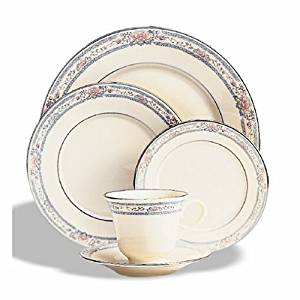"Assortment Styler is the only research tool that could provide us with a systematic and quantified overview of the trends within home design, with the detail necessary to provide insights beyond color and general style. It has been an invaluable tool for better streamlining our resources in product development to ensure the best possible fit into overall home décor trend direction.”
 A long time ago a young man with a strong background in research was excited to take a new job with a consumer products company called Lenox China and Crystal. During his orientation he was shown the “market research” conference room where the walls were lined with shelves that held samples of the top 50 fine china dinnerware patterns, the top 50 casual dinnerware patterns and the top 50 fine crystal stemware patterns. He learned that he was going to have to understand what it was about these designs that made them top sellers. “How hard can this be” he thought when he settled into the conference room with a blank pad and the intention to find the commonalities that lead to sales success through simple, logical analysis.
A long time ago a young man with a strong background in research was excited to take a new job with a consumer products company called Lenox China and Crystal. During his orientation he was shown the “market research” conference room where the walls were lined with shelves that held samples of the top 50 fine china dinnerware patterns, the top 50 casual dinnerware patterns and the top 50 fine crystal stemware patterns. He learned that he was going to have to understand what it was about these designs that made them top sellers. “How hard can this be” he thought when he settled into the conference room with a blank pad and the intention to find the commonalities that lead to sales success through simple, logical analysis.
Many frustrating hours later that young man – Rick Babick, of course – found himself with a new thought: “what have I gotten myself into?” I couldn’t find any rhyme or reason to those top selling designs. There were some commonalities, of course, but they were simplistic at best. I needed to go much further. So I decided that I needed to talk to decision-makers – women who had recently purchased the category.
I took the top 100 best-selling fine china dinnerware patterns to a research company in a local mall. I had the research company recruit qualified women to come in and I personally interviewed them asking which patterns they liked and why they liked them. I learned two really important things. They absolutely knew which designs they liked and they could not explain why in any useful ways.
Their choices came quickly and easily. In fact, the only times they had to pause was when they had to choose between two liked designs. The “whys” took much more time. I tended to get answers that were more like excuses. “It’s pretty.” “I just like it.” “It’s me.” I pressed them over and over. Why or how is it pretty? Why do you like it? How is it you? My questions were to no avail. They rarely offered substantive answers that designers or product developers could use. At best, continued pressing might yield an answer like “it matches my drapes.” I called these answers excuses. They were not useful to our creative team.
But the effort was not lost --- it was clear that consumers had strong feelings about what they liked and they could identify what they liked quickly and easily. That meant that asking lots of people in surveys would yield reliable projectable results. Along came my first set of patterns to test and I designed a quantitative study. The results came in and my heart sank. One of the new designs garnered half the votes in the study. Surely that wasn’t a good result with 30 designs included. Plus, management hated the design. It was seen as a “ditsy” floral not at all in keeping with the upscale Lenox design positioning.
The next pattern test came along and this time the collection was targeted to brides. More to test the test than to further evaluate winning designs, I argued to put the previous winner back in to see what would happen. Sure enough, it glommed half the votes again. But something else happened too. Management began to like it. This happened again in another round of testing. Eventually the design was introduced as part of a new bridal collection named “Cosmopolitan”. The pattern was called “Charleston”. Charleston became the biggest selling dinnerware pattern for the entire fine china industry for a decade. It took the factory two and a half years to catch up with the demand.
Needless to say, Lenox management recognized the tremendous potential of the research I had done. Suddenly I was tasked with testing every major product the company sold. Within a few years I was running a research department with ten people conducting 75 studies per year for multiple brands in multiple product categories and channels and spending $2 million dollars per year to do so. Our market shares soared in all of our categories. In fine china alone, our share rose from 18% to 45% during those years. Once retailers understood that Lenox was eliminating new product risks by testing everything, sell-in became a foregone conclusion.
I founded Design Research, LLC in 1998 in order to work with all of my Lenox friends who were all over the industry. We quickly became the de facto research department to the industry. Since then we have also expanded the use of our proprietary design and concept testing procedures to the housewares and home furnishings categories. Today, in our 23rd year, we are happily alone in occupying our unique spot at the intersection of design and research for home goods. As we say in our tag line: We are celebrating 23 years of growing profits (for our clients) by design.
Thank you to all of the clients who have entrusted us with your business these past 23 years!

